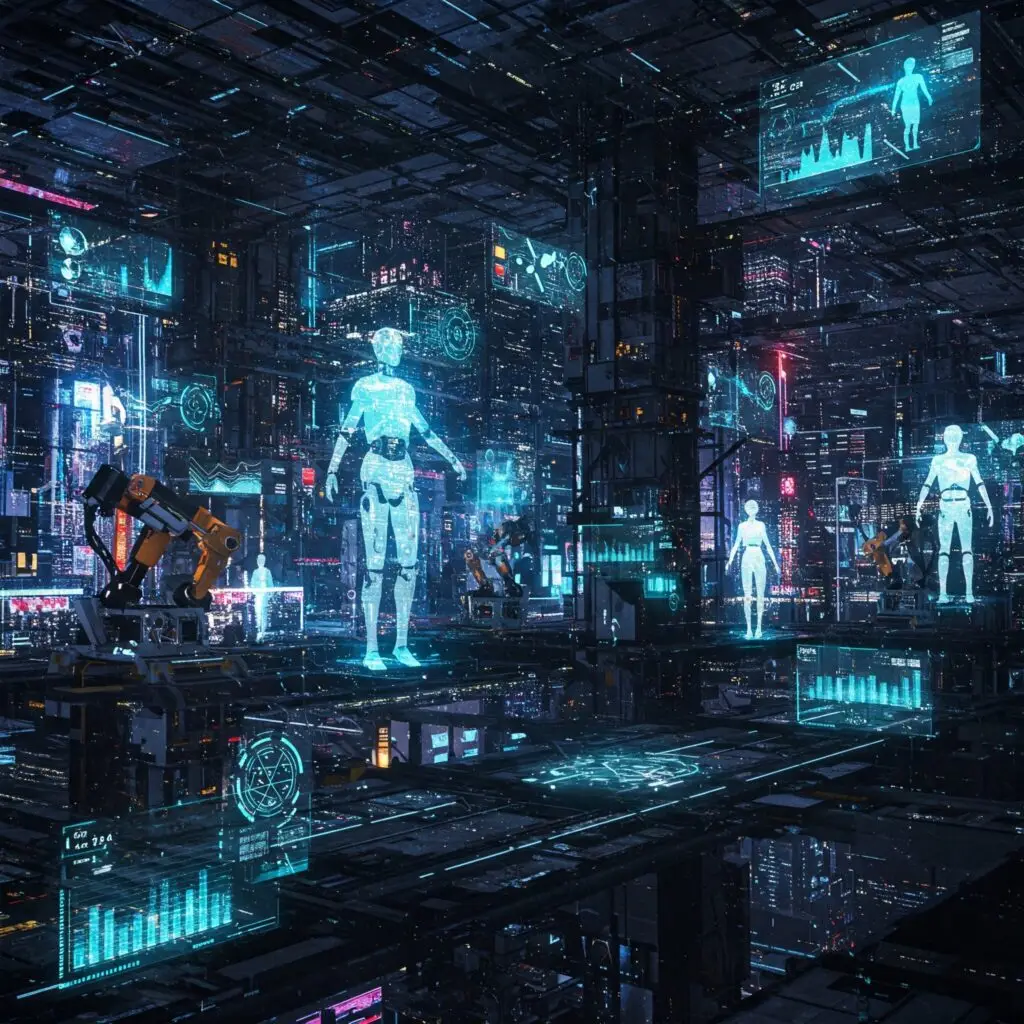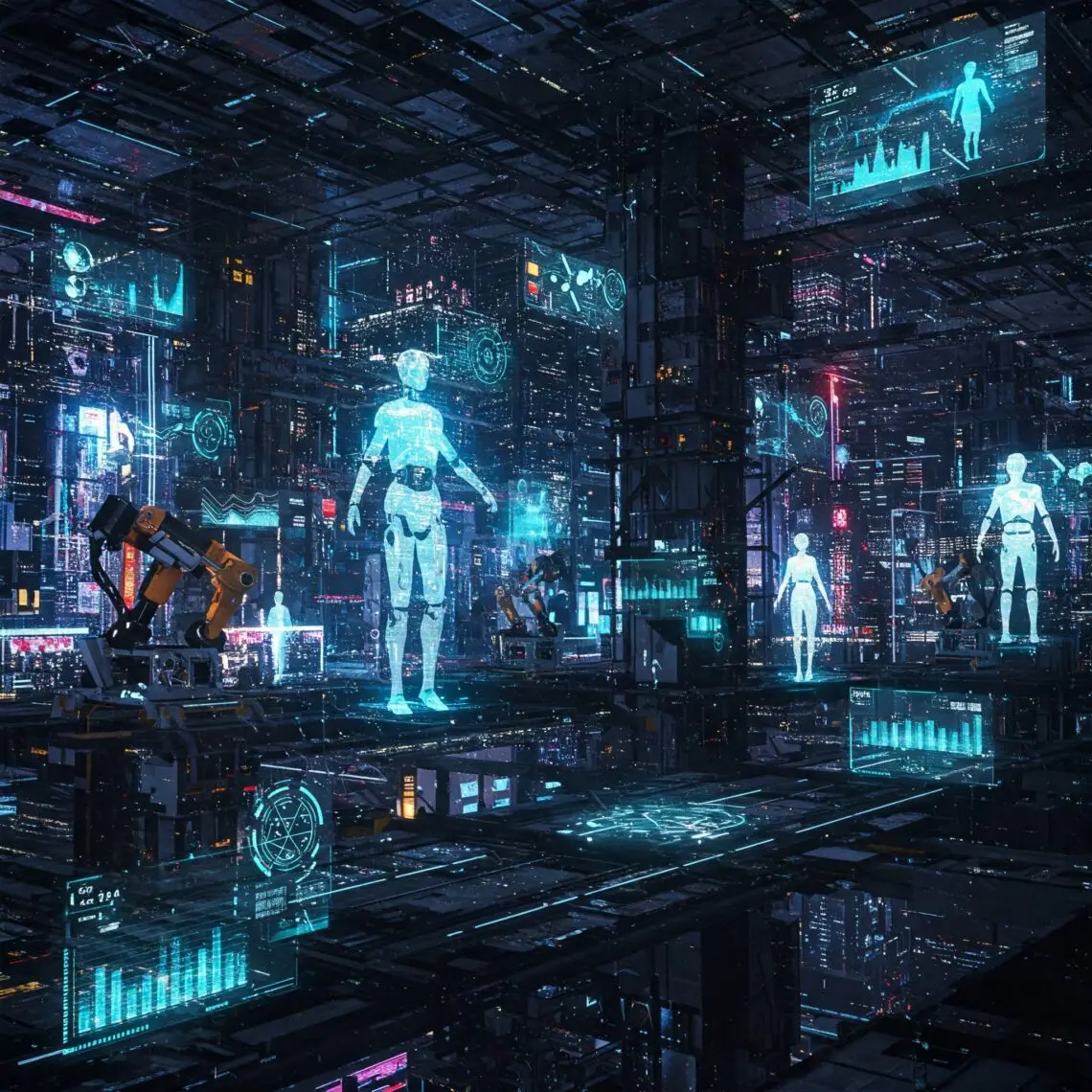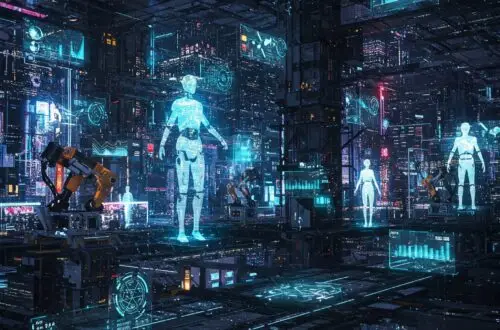The AI Job Revolution: Future-Proof Careers in the Age of Generative Intelligence

We’re standing at the brink of the most profound labor market shift since the Industrial Revolution. By 2035, generative AI (Gen AI) and large language models (LLMs) will not just automate tasks-they’ll redefine entire industries, create unprecedented roles, and render today’s “dream jobs” obsolete. Let’s unpack what’s coming, year by year, and how you can stay ahead.
Phase 1: The Foundation (2025–2027)
2025: The Rise of AI Co-Pilots
- Job Impact: Routine roles in data entry, customer service, and administrative tasks will decline by 30% as AI chatbots (like GPT-5) handle inquiries, scheduling, and documentation.
- Emerging Roles:
- AI Prompt Engineers: Experts crafting precise prompts to optimize LLM outputs. (Avg. Salary: $145K).
- Synthetic Data Designers: Create AI-training datasets for sensitive industries like healthcare. (Avg. Salary: $160K).
- Preparation: Learn basic Python and NLP tools. Platforms like Coursera offer free AI literacy courses.
2026: The Automation Wave Hits White-Collar Jobs
- Job Impact: Goldman Sachs predicts 25% of finance and legal tasks (contract review, risk analysis) will automate.
- Emerging Roles:
- AI Compliance Auditors: Ensure AI systems adhere to regulations like the EU AI Act. (Avg. Salary: $175K).
- AI-Assisted Journalists: Use LLMs for research but focus on investigative storytelling. (Avg. Salary: $130K).
- Preparation: Sharpen critical thinking and creative problem-solving-skills AI can’t replicate.
2027: The Healthcare Transformation
- Job Impact: 40% of radiologists’ diagnostic tasks will be AI-driven, but patient-facing roles thrive.
- Emerging Roles:
- AI Medical Translators: Bridge gaps between AI diagnoses and patient communication. (Avg. Salary: $190K).
- Genomic Data Strategists: Use AI to personalize treatments. (Avg. Salary: $220K).
- Preparation: Pursue hybrid skills (e.g., biology + data science) through nano-degree programs.
Phase 2: Specialization (2028–2030)
2028: The Creative Economy Booms
- Job Impact: AI generates 50% of marketing content, but human creativity becomes premium.
- Emerging Roles:
- AI Art Directors: Curate AI-generated visuals for brands. (Avg. Salary: $200K).
- Virtual World Architects: Design metaverse ecosystems using AI tools. (Avg. Salary: $250K).
- Preparation: Master AI design tools (e.g., MidJourney 4.0) and storytelling frameworks.
2029: Ethical AI Takes Center Stage
- Job Impact: Public distrust in AI decisions spurs demand for transparency.
- Emerging Roles:
- AI Bias Mitigation Specialists: Audit algorithms for fairness. (Avg. Salary: $210K).
- Digital Identity Managers: Protect user data in AI-driven ecosystems. (Avg. Salary: $195K).
- Preparation: Study ethics frameworks (e.g., EU’s GDPR) and bias-detection tools.
2030: The Green-Tech Surge
- Job Impact: AI optimizes 60% of renewable energy grids, phasing out fossil fuel roles.
- Emerging Roles:
- Climate AI Modelers: Predict and mitigate ecological risks. (Avg. Salary: $230K).
- Carbon Accountants: Track emissions using AI analytics. (Avg. Salary: $180K).
- Preparation: Combine sustainability certifications with AI/data skills.
Phase 3: Maturity (2031–2035)
2031–2035: The Human-AI Symbiosis Era
- Top 5 Highest-Paying Roles:
- AI Model Curators ($300K+): Fine-tune enterprise LLMs for specific industries.
- Neuro-Interface Designers ($280K+): Develop brain-computer interfaces for AI collaboration.
- AI-Powered CEOs ($2M+): Executives using real-time AI analytics for strategic decisions.
- Quantum AI Engineers ($350K+): Merge quantum computing with LLMs for breakthroughs.
- Digital Immortality Planners ($250K+): Create AI avatars that preserve human legacy.
How to Prepare: A Survival Guide
1. Adopt a “Skills-First” Mindset
- Priority Skills:
- STEM + Creativity: AI can’t replicate innovative thinking (e.g., designing AI art prompts).
- Emotional Intelligence: Manage teams where AI handles logistics.
- Adaptability: The average worker will change careers 3x by 2035.
2. Invest in Micro-Credentials
- Top Certifications:
- AI Ethics (MIT): For bias mitigation roles.
- Generative AI Design (Stanford): For synthetic data specialists.
- Quantum Computing Basics (Coursera): Future-proof against obsolescence.
3. Build an AI-Augmented Network
- Use AI tools like LinkedIn’s Career Assistant 2.0 to identify skill gaps and connect with mentors.
4. Embrace Hybrid Work Models
- By 2030, 80% of jobs will blend remote AI collaboration and in-person creativity sessions.
Conclusion: Thriving in the AI Epoch
The future isn’t about competing with AI-it’s about leveraging it to unlock human potential. While roles like truck drivers and data clerks fade, opportunities in AI ethics, neuro-interface design, and climate tech will soar. The key to success? Continuous learning, ethical awareness, and the courage to reinvent yourself.
——————————————————————————————————-
The best way to predict the future is to create it.” – Adapted from Abraham Lincoln.
—————————–————————————————————————–
By 2035, the highest earners won’t be those who fear AI but those who harness its power to solve humanity’s greatest challenges. Start preparing today-your future self will thank you.
This post integrates data from the World Economic Forum, Forbes, and industry reports to provide a credible, actionable roadmap. Let me know if you’d like to refine specific sections!
Proudly powered by WordPress





